Migraine Tracking Form
This is a comprehensive migraine tracking form for use by medical professionals. It covers most aspects of migraine as reported by patients. Just clone this free template into your account, embed the form on your website or share on social media.
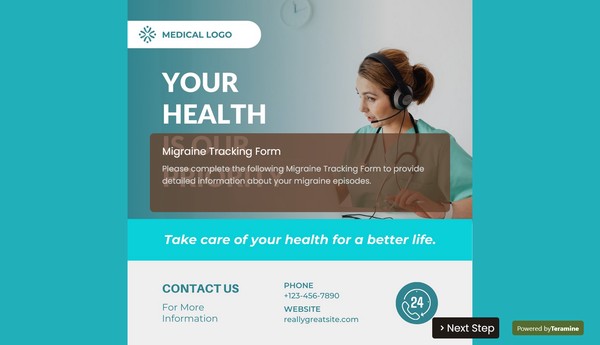
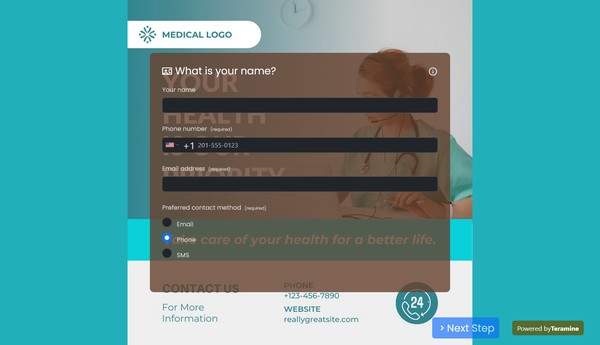
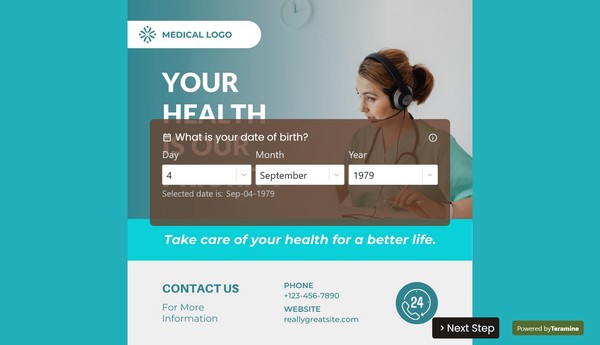
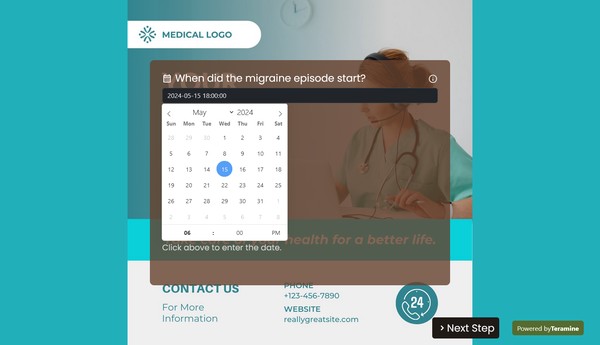
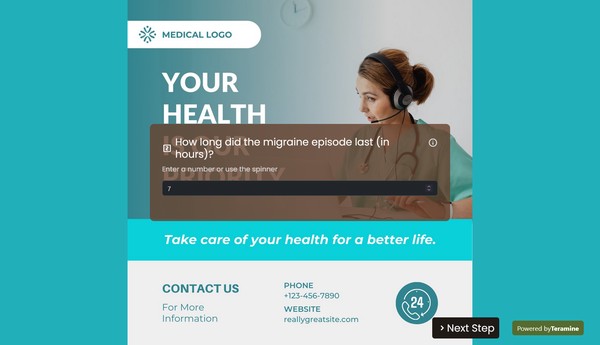
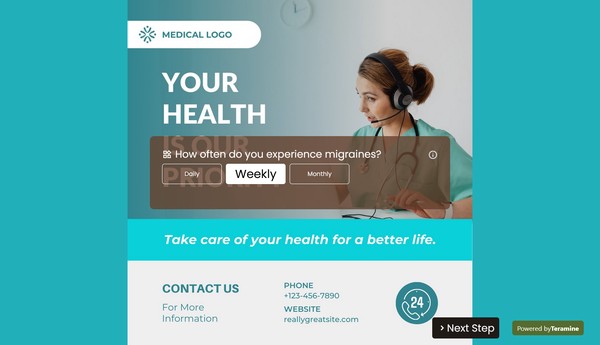
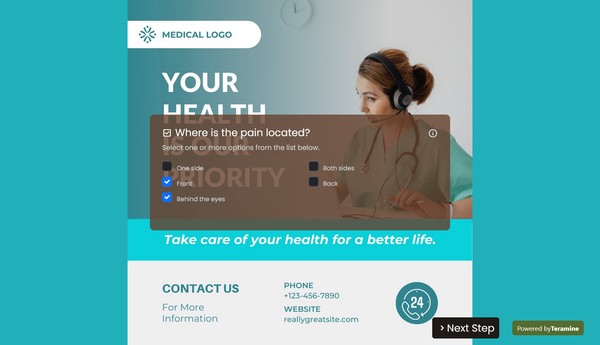
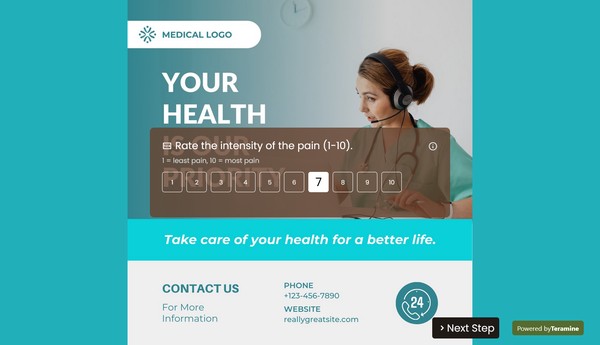
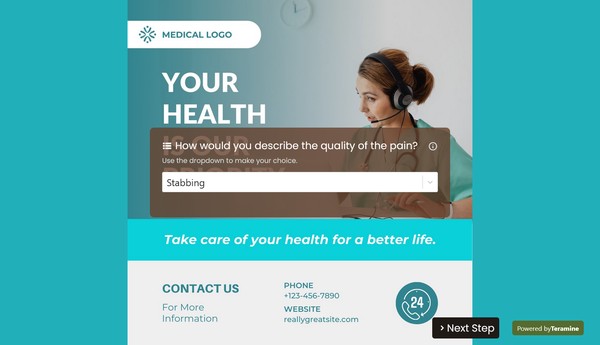
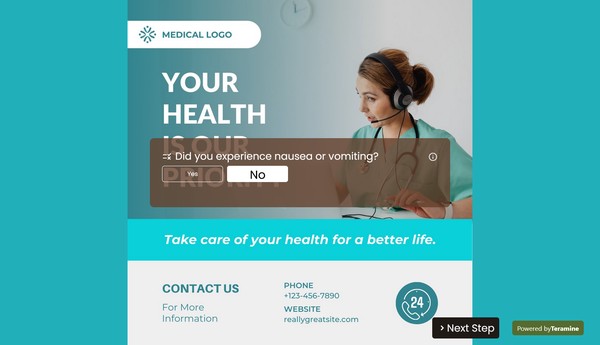
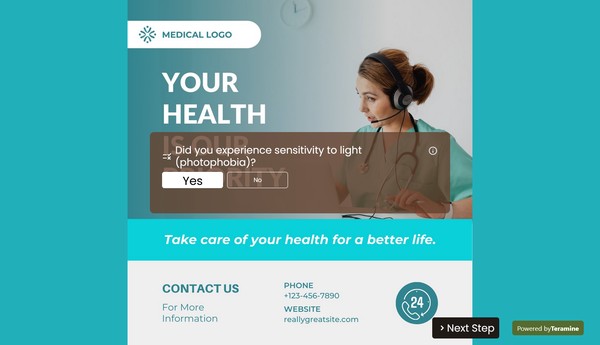
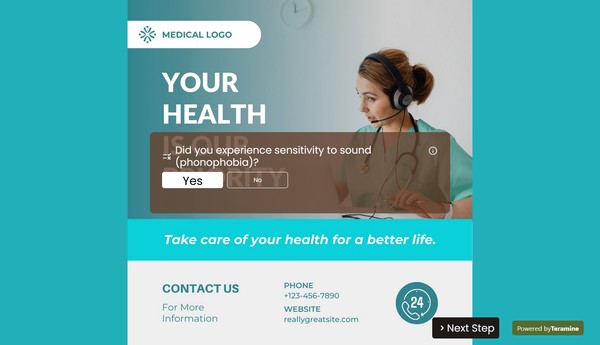
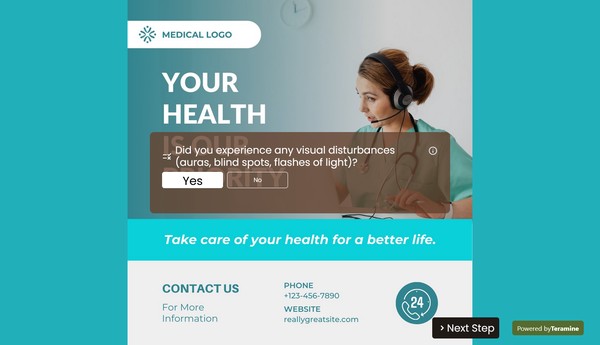
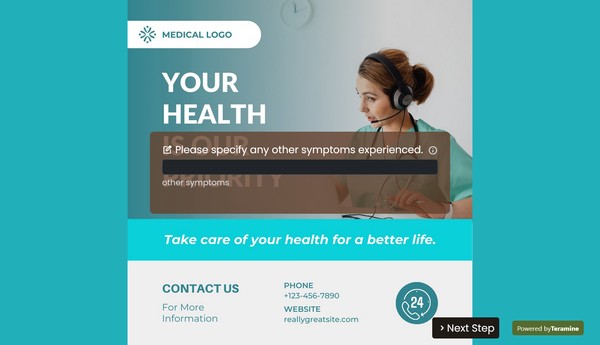
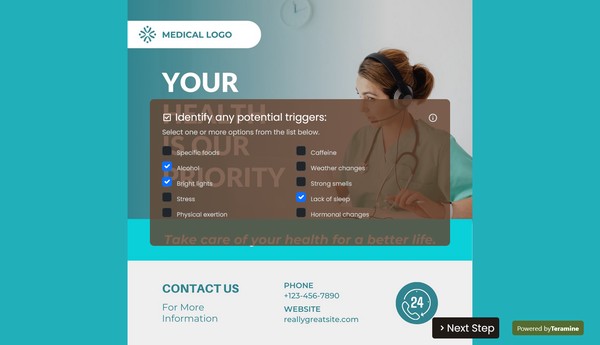
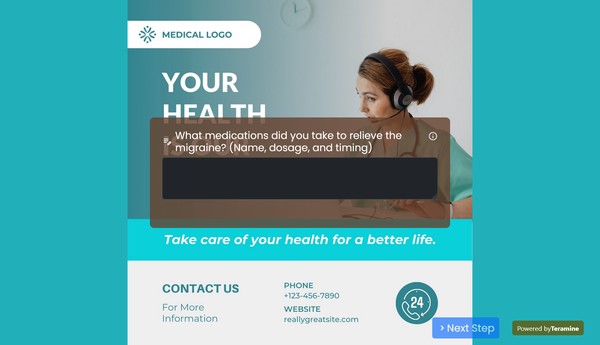
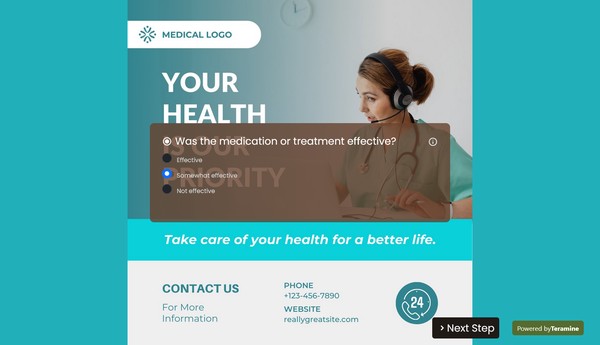
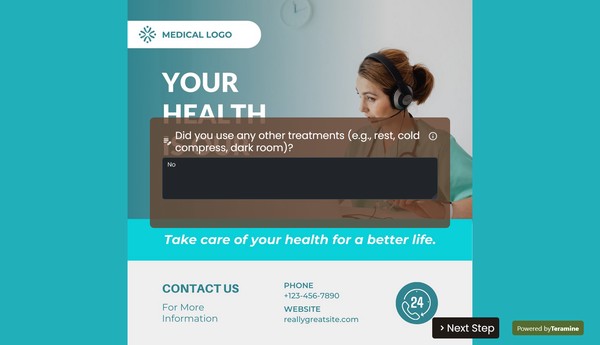
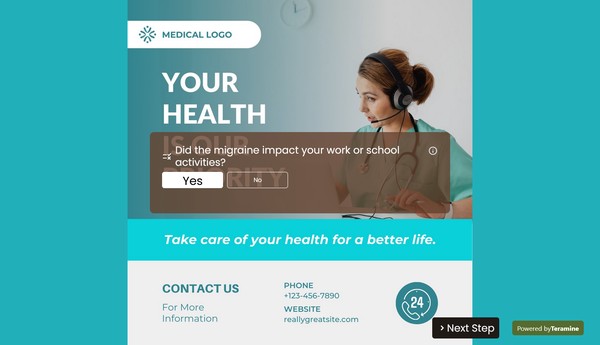
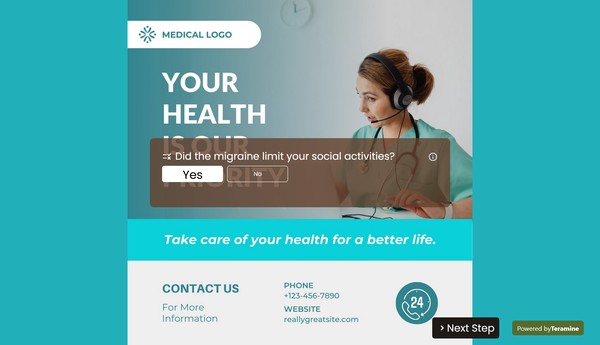
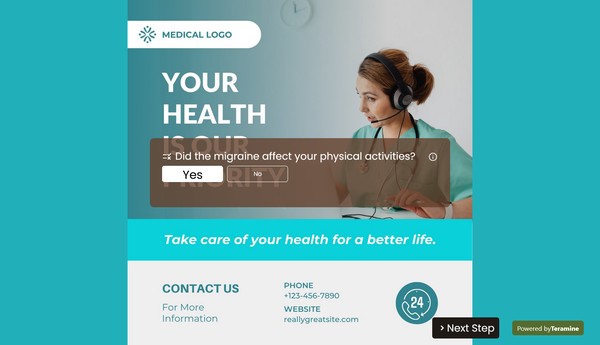
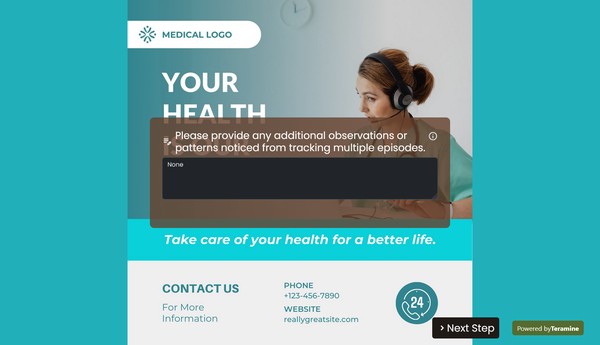
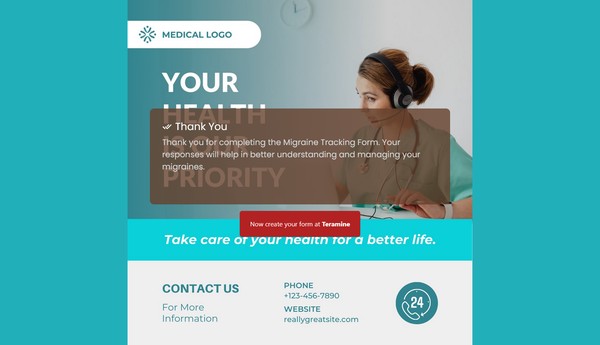
Migraine Tracking Form FAQs
A Migraine Tracking Form is a structured tool used by individuals to monitor and record their migraine occurrences. This form captures various data points related to the migraines, such as the frequency, duration, intensity, triggers, symptoms, and any treatments administered.
The primary purpose of this tracking tool is to help users and healthcare providers identify patterns and potential triggers that contribute to migraine episodes. By consistently recording this information, individuals can gain insights into their migraines, make informed decisions about management strategies, and facilitate more effective discussions with healthcare professionals.
The form may include sections for:
- Date and Time: When the migraine started and ended.
- Duration: How long the migraine lasted.
- Intensity Levels: A rating scale to assess the severity of the pain.
- Symptoms: Associated symptoms experienced during the episode (e.g., nausea, aura).
- Triggers: Potential factors that may have contributed to the migraine (e.g., food intake, stress, weather changes).
- Medications Used: Any treatments taken, including over-the-counter or prescription medications.
- Outcome: Effectiveness of the treatment and any side effects experienced.
Overall, a Migraine Tracking Form serves as a valuable resource for personal health management and can enhance the quality of care received from medical professionals.
A Migraine Tracking Form should be designed to capture comprehensive and relevant data to assist both patients and healthcare providers in understanding migraine patterns and triggers. Below are the essential components that should be included:
Patient Information:
- Name
- Age
- Gender
- Contact Information
- Medical History
Migraine Details:
- Date and time of onset
- Duration of the migraine
- Frequency of occurrences (daily, weekly, monthly)
Symptoms:
- Type of pain (e.g., throbbing, pulsating, constant)
- Location of pain (e.g., unilateral, bilateral)
- Intensity of pain (scale of 1-10)
- Associated symptoms (e.g., nausea, vomiting, sensitivity to light/sound)
Triggers:
- Potential triggers (e.g., food, stress, weather changes, hormonal fluctuations)
- Timing of trigger (before, during, or after the migraine)
Medications:
- Any medications taken (both abortive and preventive)
- Dosage and frequency of medication usage
- Effectiveness of medications in alleviating symptoms
Lifestyle Factors:
- Sleep patterns (e.g., hours of sleep, quality of sleep)
- Dietary habits (e.g., meals consumed before the migraine)
- Physical activity levels
- Stress levels (rated on a scale)
Impact on Daily Life:
- Level of impairment during migraine attacks
- Days missed from work or social activities
- Quality of life assessment related to migraine
Follow-Up:
- Space for notes or observations
- Any previous treatment interventions and their outcomes
By including these components, a Migraine Tracking Form can facilitate effective communication with healthcare providers and contribute to more personalized treatment plans.
Utilizing a Migraine Tracking Form offers several advantages that can significantly enhance patient management and clinical outcomes. Here are the key benefits:
Symptom Awareness: By documenting frequency, duration, and intensity of migraine episodes, patients gain a better understanding of their individual migraine patterns. This awareness can empower them to identify triggers and learn to manage their conditions more effectively.
Customized Treatment Plans: Detailed tracking of migraines allows healthcare providers to develop more tailored treatment plans. By analyzing the data collected, practitioners can recommend specific medications or lifestyle changes that align with the patient's unique profile.
Identification of Triggers: The use of a tracking form can help identify potential triggers—such as dietary choices, stress levels, or sleep patterns—enabling patients to take proactive steps to avoid these factors.
Improved Communication: A structured tracking form fosters better communication between patients and healthcare providers. Patients can bring documented evidence of their migraine experiences to consultations, facilitating more informed discussions and decision-making.
Progress Monitoring: Tracking forms enable both patients and providers to monitor progress over time. This ongoing evaluation helps in assessing the effectiveness of treatments, allowing for timely adjustments as necessary.
Research and Data Analysis: Aggregated data from tracking forms can contribute to broader clinical research, offering valuable insights into migraine prevalence, patterns, and responses to treatment, which can ultimately enhance overall patient care.
Enhanced Patient Engagement: Involving patients in the tracking process promotes greater engagement in their own healthcare journey. This active participation can lead to improved adherence to treatment protocols and lifestyle modifications.
In summary, a Migraine Tracking Form serves as a valuable tool that not only aids in better understanding and management of migraines but also strengthens the partnership between patients and healthcare providers.
Yes. We take the security of your data very seriously. We have built our application in compliance with the latest security standards. Your data is locked down with access allowed only after strict security checks. In addition, we use the latest SSL encryption standards to protect your data in transit from our servers to your device. You can also protect your forms by using our captcha widgets to prevent spam.'